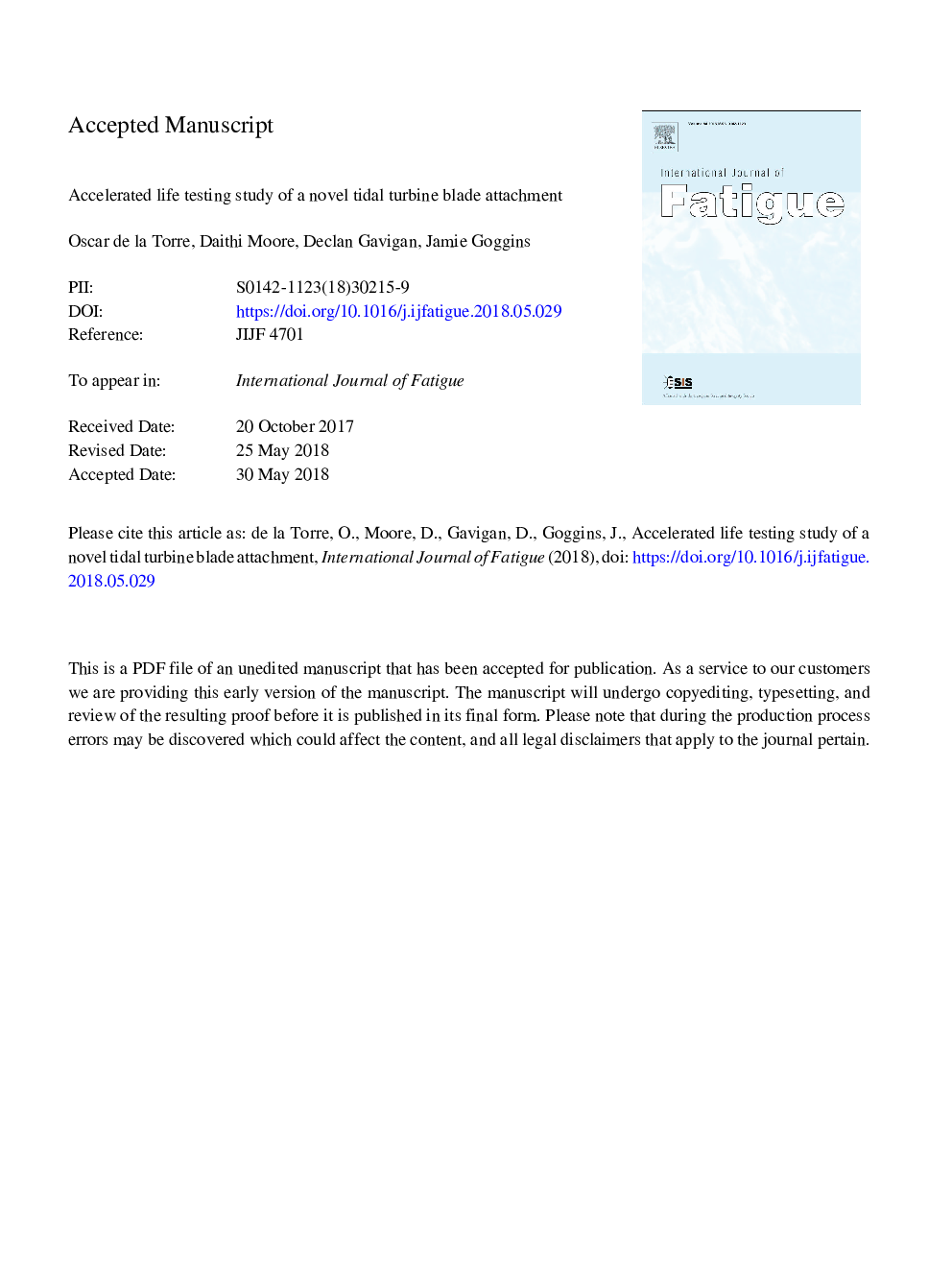| Article ID | Journal | Published Year | Pages | File Type |
|---|---|---|---|---|
| 7171376 | International Journal of Fatigue | 2018 | 24 Pages |
Abstract
This paper describes the setup and some results of an accelerated life testing study of a tidal turbine blade attachment, which involved high-cycle fatigue testing of a tidal turbine subsystem at the Large Structure Laboratory of the National University of Ireland Galway (NUI Galway). Tidal turbines are in an early stage of development, which implies that there is no standard design and many different approaches are emerging in the market. The subsystem described in this paper is a 3/8 scaled down part of a 10-blade hubless turbine, developed by OpenHydro, a company specialising in the design, manufacture, installation, and maintenance of marine turbines generating renewable energy from tidal streams. The subsystem consists of a blade and a sector of the rotating ring. The sample was installed on an existing 10â¯mâ¯Ãâ¯6â¯mâ¯Ãâ¯6â¯m reconfigurable test frame and was loaded with a servo-hydraulic actuator controlled by an advanced software system, which allowed for an accurate sinusoidal load-controlled high-cycle fatigue test. The sample was loaded at four different levels to accumulate damage representative of a typical tidal turbine deployment life. The main objective of the test was to analyse the structural behaviour of the attachment system solution (blade-rotating ring) under fatigue load, particularly the internal structural welds, and to validate previously developed numerical models. To address all the requirements and to obtain valuable data, a large experimental test was set up. A total of 110 channels in a multi-channel data acquisition system were used to simultaneously acquire strain, displacement, and load data. Accurate measurements of temporal deformations and movement in a 3D field at the rear side of the ring were also acquired using a Digital Image Correlation system. The mechanism of failure was expected to be fatigue crack propagation at locations pre-determined in a structural analysis of the system.
Related Topics
Physical Sciences and Engineering
Engineering
Mechanical Engineering
Authors
Oscar de la Torre, Daithi Moore, Declan Gavigan, Jamie Goggins,
